My First Tunnel
Remember your first tunnel? I do; but now, it not only involves me but also my wife and children. Driving through the tunnel has become an event my family and I look forward to when we travel to the state of Alabama. The tunnel I speak of runs beneath Mobile Bay. My first encounter came at age sixteen, while I was on vacation with the Rankin Family to the white beaches of Gulf Shores, Alabama. Even though I will never forget that vacation and the fun I had on the beach and while fishing in the gulf, the tunnel really got my attention.
At first, it was alarming that we would be traveling in an automobile through a small shaft under a large body of water; I was concerned that if something happened and all that water came rushing in, we would all die. But an interesting distraction happened while we were in the tunnel: happy-go-lucky kids, in numerous vehicles, were all honking their horns while inside the tunnel. This small act relieved a lot of the tension in me, and before I knew it we were out of the tunnel on the other side of the bay.
I still encounter tunnels on a daily basis. In the Dallas area, I have passed through roadway tunnels as well as through tunnels associated with the public transit system (DART). In the Northeast, I have experienced the Big Dig tunnel in the Boston, Massachusetts area. Driving back to Northwest Arkansas to visit family and friends I pass through the Bobby Hopper Tunnel, the first tunnel in Arkansas to go through a mountain and the connection to the River Valley with the enchanted area of the state known as Northwest Arkansas.
From the roadway tunnels that pass under interstate highways to smaller tunnels that allow for pedestrian and bike flow under a busy intersection, tunnels are everywhere. These locations serve a purpose that allows for safer and easier travel to millions of people around the world. They are also examples of great engineering and architectural achievements that span throughout world history.
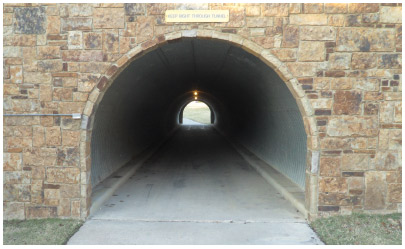
Photo 1. Tunnel under a major intersection for pedestrian/ bike traffic. Notice signage above the entrance stating, “Keep Right Through Tunnel.”
Tunnels and the NEC
So, with tunnels comes a need for lighting and, in some cases, ventilation; but where does one go to find guidance toward the installation requirements for these areas? How do we decide which type of wiring method, device or luminaire to install in these locations? Are these areas subject to physical damage? What does the NEC have to say about these locations? Does the terminology that the NEC and the public use even have the same meaning?
Defining a Tunnel
When dealing with this subject one must know what defines a tunnel. In the NEC we typically find definitions in Article 100, but this is not the only place a definition can be found. Definitions that relate to a particular article are found in the .2 locations within the article. Upon searching, we find that there is no definition of tunnels within the NEC. This leads me to Webster’s Dictionary for their help.
When used as a noun, a tunnel is defined as a passageway through or under something, usually underground (especially one for trains or cars); example, “The tunnel reduced congestion at that intersection.” This definition seems to be addressing the two topics I mentioned in this story: we have passed under a large body of water and then under a busy city intersection. But what can we find within the NEC towards installation guidance and practices when there is no definition of these locations? More searching and a word search of the NEC finds the word “tunnel”; but in reading that section in Article 110, it appears that this applies to installations of “over 600 volts.” This code language does not help me apply the requirements to the pedestrian tunnels I want to discuss. Additionally, what guidance can we find toward what types of conductors and conduit methods are acceptable in these locations? Are these areas considered as dry, damp or wet locations? This is something that must be addressed now before we purchase materials, install the electrical devices, call for an inspection, and then face an inspector who ultimately has the final say. His or her decision might not be the same as ours, and could cause additional work, expense, and unnecessary hard feelings.
A tunnel can mean different things to different individuals. I recently passed a drainage culvert under a highway. A smaller culvert is not a tunnel to me, but to a beaver it becomes a great and safe passageway from one side of the road to the other. Based on the above definition, the culvert could be defined as a tunnel. It is noteworthy for the reader to be aware that there have been electrical conduits installed in what one might consider a culvert.
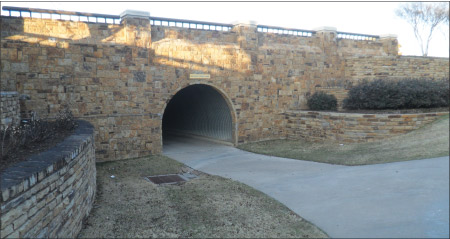
Photo 2. View of trails converging at the tunnel entrance.
A word search for the word “tunnel” was conducted for the 2011 NEC. The majority of the hits occurred in Article 110, Part IV, Tunnel Installations over 600 Volts, Nominal, but the installations I am interested in are applications under 600 volts. I had one other hit for tunnels in Section 210.6, Branch Circuit Voltage Limitations. This was for 600 volts between conductors and dealt with permanently installed auxiliary equipment for electric discharge lamps for luminaires. This is still not helpful for my installation. However, this information would be beneficial for the installation of a “utility” tunnel and would be very much applicable. This sort of tunnel would be installed between two buildings and used in conjunction with other utilities for the routing of their systems.
Wet, Damp or Dry Location?
How do we determine if a tunnel is a wet, damp or dry location? It is highly advisable to schedule a meeting with the local authority having jurisdiction (AHJ) for his/her viewpoint before you begin your project. While visiting various pedestrian tunnels I have observed several wiring methods. I have encountered set screw and compression EMT connectors and fitting. I have seen EMT conduit installed with one-hole straps to the wall of the tunnel. I have also seen installations of EMT conduit supported by unistrut with unistrut straps.
It appears to me that there are many interpretations of the tunnel area as it pertains to a wet, damp or dry location. We must also remember that changes in environmental conditions may change the condition of our tunnel. Heavy rains may change a typically dry condition to a wet or damp location. This must be considered when you choose the wiring method for these locations.
So who are these individuals that fill the role of an AHJ? The AHJ has final approval for your electrical project and is burdened with a tremendous responsibility for the safety of the public. This involves both property and personnel associated with various locations. These individuals are typically experts within their fields and highly respected. Let’s refresh ourselves on the NEC definition of the AHJ:
Authority Having Jurisdiction (AHJ). An organization, office, or individual responsible for enforcing the requirements of a code or standard, or for approving equipment, materials, an installation, or a procedure.Informational Note: The phrase “authority having jurisdiction,” or its acronym AHJ, is used in NFPA documents in a broad manner, since jurisdictions and approval agencies vary, as do their responsibilities. Where public safety is primary, the authority having jurisdiction may be a federal, state, local, or other regional department or individual such as a fire chief; fire marshal; chief of a fire prevention bureau, labor department, or health department; building official; electrical inspector; or others having statutory authority. For insurance purposes, an insurance inspection department, rating bureau, or other insurance company representative may be the authority having jurisdiction. In many circumstances, the property owner or his or her designated agent assumes the role of the authority having jurisdiction; at government installations, the commanding officer or departmental official may be the authority having jurisdiction.
As we can see from the definition, an AHJ can be made up of different individuals. Who wears that hat depends on the location you are working in. Become familiar with the local AHJ, as this person can become your greatest asset towards installing a compliant electrical installation. The AHJ will use his/her experience and expertise to make a determination of what is best for that particular situation. But the AHJ will also take into consideration three definitions within the NEC to help mold that decision.
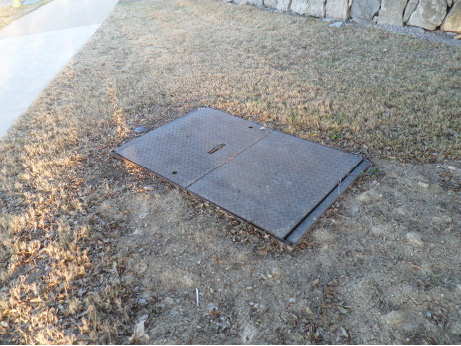
Photo 3. An access point to an underground utility tunnel
Proper Interpretation and Enforcement Starts with Understanding Definitions
Let’s look at the definitions we are to consider when making decisions about these locations. To begin, let’s go to Article 100 in the 2011 NEC. We need to review the definitions that are going to help us make this decision.
Location, Damp. Locations protected from weather and not subject to saturation with water or other liquids but subject to moderate degrees of moisture. Examples of such locations include partially protected locations under canopies, marquees, roofed open porches, and like locations, and interior locations subject to moderate degrees of moisture, such as some basements, some barns, and some cold-storage warehouses.Location, Dry. A location not normally subject to dampness or wetness. A location classified as dry may be temporarily subject to dampness or wetness, as in the case of a building under construction.Location, Wet. Installations underground or in concrete slabs or masonry in direct contact with the earth; in locations subject to saturation with water or other liquids, such as vehicle washing areas; and in unprotected locations exposed to weather.
Again, it must be stressed that these locations within tunnels are subject to the interpretation of the AHJ. Let’s revisit photo four; it could be argued that this is a damp location. It could also be considered a wet location. According to the definitions, this area could be subject to moderate degrees of moisture or, in some instances, saturation with water or other liquids. In this installation, the AHJ determined that this area meets the requirements of a dry location and allowed the wiring method shown in the picture. Right or wrong, it is the judgment of the AHJ and has been approved.
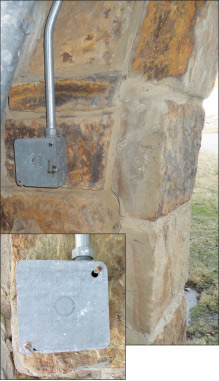
Photo 4. A “4 by 4 Combo Box” at the entrance (interior) of a tunnel. Notice corrosion on screws (inset photo).
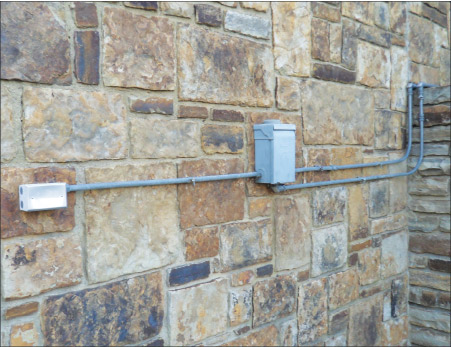
Photo 5. Electrical installation on the exterior of the tunnel is considered a “wet” location.
In photo five, we see an installation on the exterior of the tunnel location. This area has been deemed a wet location from the definition stated above. It is noteworthy that an area does not have to be located outside to be considered a wet location. An example of an interior location that could be considered a wet location would be a poultry processing facility, which is subject to saturation from high pressure washdowns at the end of various shifts. This environment requires the electrical contractor to install the correct electrical devices and components that will “survive” as well as function properly under such conditions.
Luminaire Types within Tunnels
Luminaire types within fixtures must also follow the guideline of the above definitions as well as their manufacturer’s installation instructions. Protection of the lamp must also be considered due to the environment and also due to vandalism that sometimes occurs. Lighting is extremely important for the safety of the user of the trail/sidewalk system. Unsavory individuals with malicious and/or dishonorable intentions sometimes lurk in dimly lit areas. Properly lit areas help to deter the would-be unsavory individual from unleashing his devious intentions.
Lighting also allows for people to see in the tunnels. Walkers, joggers and bicyclists need lighting in these locations to avoid possible injuries due to collisions. It goes without saying that these requirements are also necessary for tunnels that allow for vehicular movements as well. One could only image the calamity that would result from improperly lighted tunnels.
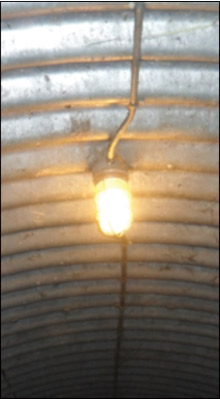
Photo 6. Types of luminaries used in tunnels
Ventilation Guidelines
Ventilation is an important consideration for life safety and for dissipation of heat from various electrical devices. Heat produced by transformers or lighting ballasts could accumulate and contribute to unfavorable conditions within these locations. Again, each tunnel is different. A small tunnel, as pictured above, top right, would not have many items that would produce a lot of heat. Being relatively short allows for the air to move freely through the tunnel. The absence of motor vehicle use does not allow for the entrapment of dangerous vapors. In larger tunnel installations, there exist many heat producing devices and ventilation would need to be considered. Ventilation will also allow for air exchanges that are necessary to remove moisture and to allow for air exchanges within these areas. Because these areas are subject to repair and alteration by qualified persons, their safety must be considered.
Roadway Tunnels Are Another Animal Altogether
Roadway tunnels are governed by another important document, which addresses lighting, ventilation and other electrical concerns that are not addressed within the NEC. These locations are still referred to as “tunnels” and deserve mention in this article.
NFPA 502 is a safety standard that covers roadway tunnels as well as other highway structures. Within this document, Chapter 12 is dedicated to the electrical systems found in these locations.
NFPA 90 lists several items that shall be connected to the emergency power system. Emergency lighting is one of these items, as one might think. Total darkness for emergency response personnel in the likelihood of an emergency would not be acceptable. Signaling features such as tunnel closure and traffic control and exit signs are to be on the system too. The other remaining items include: emergency communication, tunnel drainage equipment, emergency ventilation, fire alarm and detection, closed-circuit television, and video and firefighting equipment.
Emergency power for road tunnels is required to conform to Article 700 of NFPA 70 for certain categories of tunnels as described in Table 7.2 in NFPA 502. This part deals with fire protection and fire life safety requirements in these locations.
NFPA 502 is an interesting document. It reinforces that not all electrical requirements can be found in the NEC. Other documents must be consulted regarding specific installation practices. Please consult the NFPA website at www.nfpa.org for more useful information concerning this and other publications.
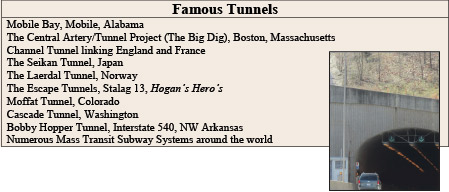
In Conclusion
My journey through tunnels has addressed many issues, and has been a brief overview or things to consider. There are many terms that one must be familiar with before conducting an electrical installation or inspection for a tunnel. The types of locations and who makes these determinations are crucial in the success of your installation. A decision must be made as to what type of tunnel one is dealing with before you can begin the work. The three discussed have specific requirements based on their location.
I hope you take a few moments to observe the workings of the common tunnel. I think you will be surprised at some of the electrical requirements that must be considered. Think about some of the decisions that need to be addressed for these locations. Good communication between the installer and the AHJ will help with an understanding of the requirements of the NEC and of other documents. Tunnels can provide years of enjoyment and safety for individuals within your community. Together we can make sure they will be functioning correctly for years to come.











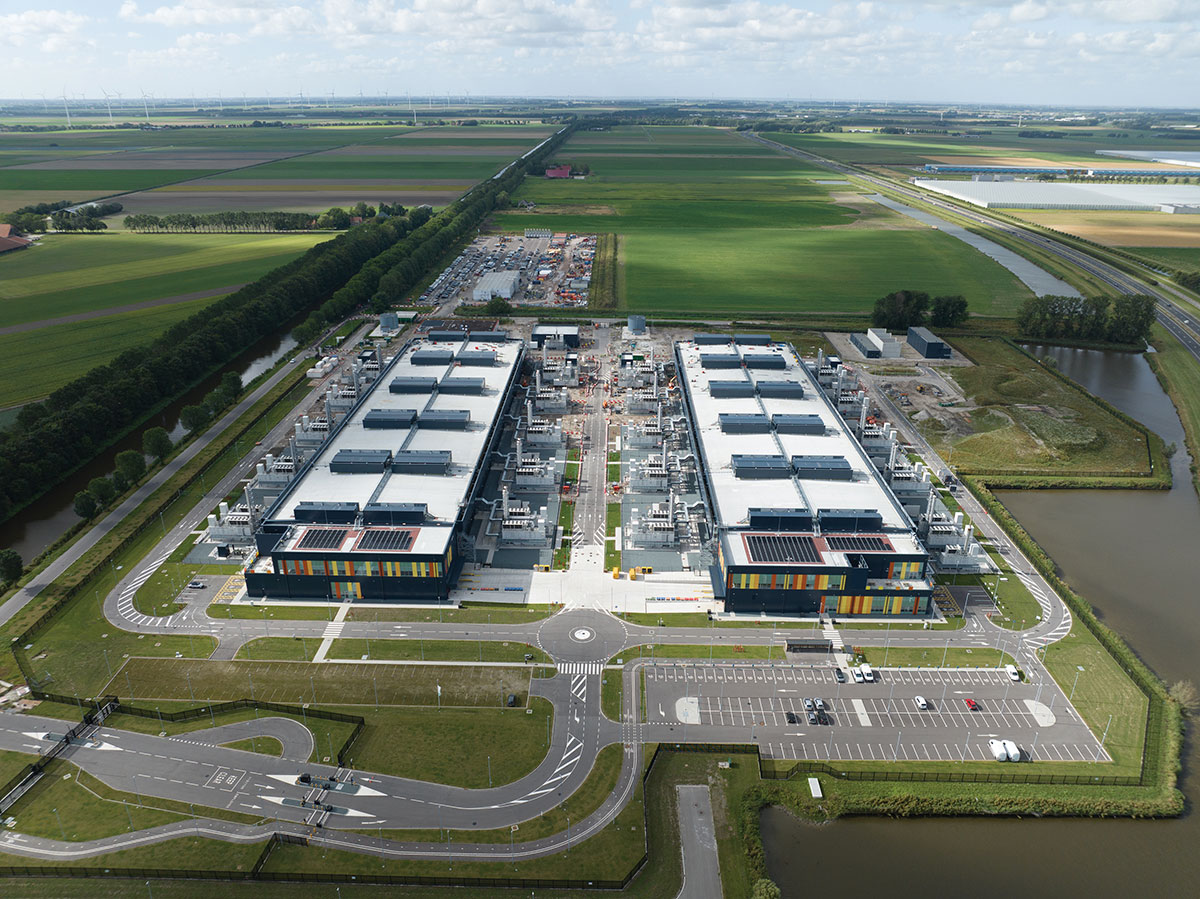

Find Us on Socials